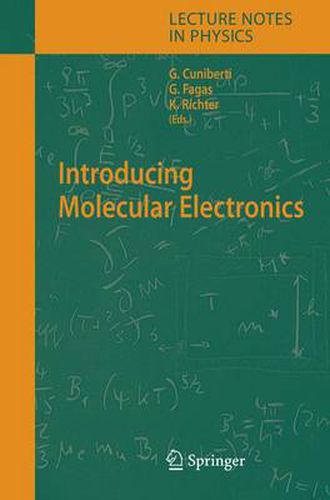Readings Newsletter
Become a Readings Member to make your shopping experience even easier.
Sign in or sign up for free!
You’re not far away from qualifying for FREE standard shipping within Australia
You’ve qualified for FREE standard shipping within Australia
The cart is loading…






This title is printed to order. This book may have been self-published. If so, we cannot guarantee the quality of the content. In the main most books will have gone through the editing process however some may not. We therefore suggest that you be aware of this before ordering this book. If in doubt check either the author or publisher’s details as we are unable to accept any returns unless they are faulty. Please contact us if you have any questions.
Klaus von Klitzing Max-Planck-Institut fur Festk orperforschung, Heisenbergstrasse 1, 70569 Stuttgart, Germany Already many Cassandras have prematurely announced the end of the silicon roadmap and yet, conventional semiconductor-based transistors have been continuously shrinking at a pace which has brought us to nowadays cheap and powerful microelectronics. However it is clear that the traditional scaling laws cannot be applied if unwanted tunnel phenomena or ballistic transport dominate the device properties. It is generally expected, that a combination of silicon CMOS devices with molecular structure will dominate the ?eld of nanoelectronics in 20 years. The visionary ideas of atomic- or molecular-scale electronics already date back thirty years but only recently advanced nanotechnology, including e.g. scanning tunneling methods and mechanically controllable break junctions, have enabled to make distinct progress in this direction. On the level of f- damentalresearch,stateofthearttechniquesallowtomanipulate,imageand probechargetransportthroughuni-molecularsystemsinanincreasinglyc- trolled way. Hence, molecular electronics is reaching a stage of trustable and reproducible experiments. This has lead to a variety of physical and chemical phenomena recently observed for charge currents owing through molecular junctions, posing new challenges to theory. As a result a still increasing n- ber of open questions determines the future agenda in this ?eld.
$9.00 standard shipping within Australia
FREE standard shipping within Australia for orders over $100.00
Express & International shipping calculated at checkout
This title is printed to order. This book may have been self-published. If so, we cannot guarantee the quality of the content. In the main most books will have gone through the editing process however some may not. We therefore suggest that you be aware of this before ordering this book. If in doubt check either the author or publisher’s details as we are unable to accept any returns unless they are faulty. Please contact us if you have any questions.
Klaus von Klitzing Max-Planck-Institut fur Festk orperforschung, Heisenbergstrasse 1, 70569 Stuttgart, Germany Already many Cassandras have prematurely announced the end of the silicon roadmap and yet, conventional semiconductor-based transistors have been continuously shrinking at a pace which has brought us to nowadays cheap and powerful microelectronics. However it is clear that the traditional scaling laws cannot be applied if unwanted tunnel phenomena or ballistic transport dominate the device properties. It is generally expected, that a combination of silicon CMOS devices with molecular structure will dominate the ?eld of nanoelectronics in 20 years. The visionary ideas of atomic- or molecular-scale electronics already date back thirty years but only recently advanced nanotechnology, including e.g. scanning tunneling methods and mechanically controllable break junctions, have enabled to make distinct progress in this direction. On the level of f- damentalresearch,stateofthearttechniquesallowtomanipulate,imageand probechargetransportthroughuni-molecularsystemsinanincreasinglyc- trolled way. Hence, molecular electronics is reaching a stage of trustable and reproducible experiments. This has lead to a variety of physical and chemical phenomena recently observed for charge currents owing through molecular junctions, posing new challenges to theory. As a result a still increasing n- ber of open questions determines the future agenda in this ?eld.